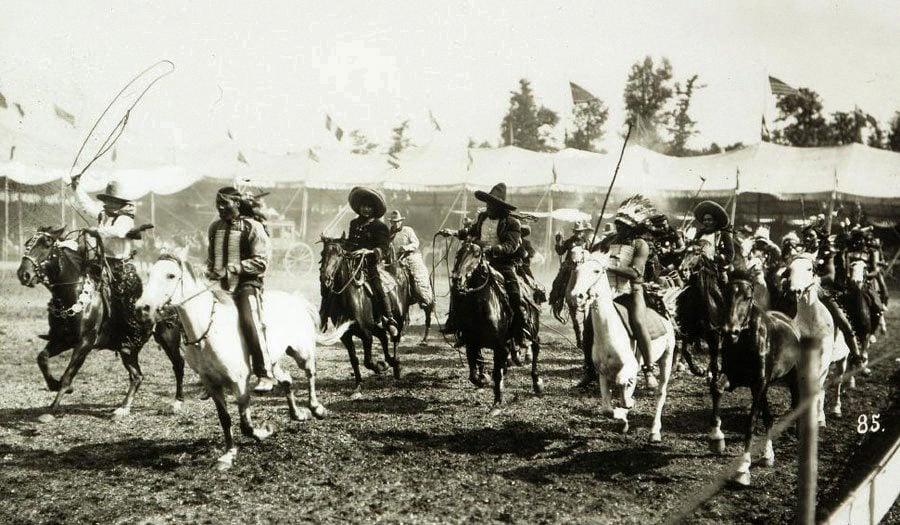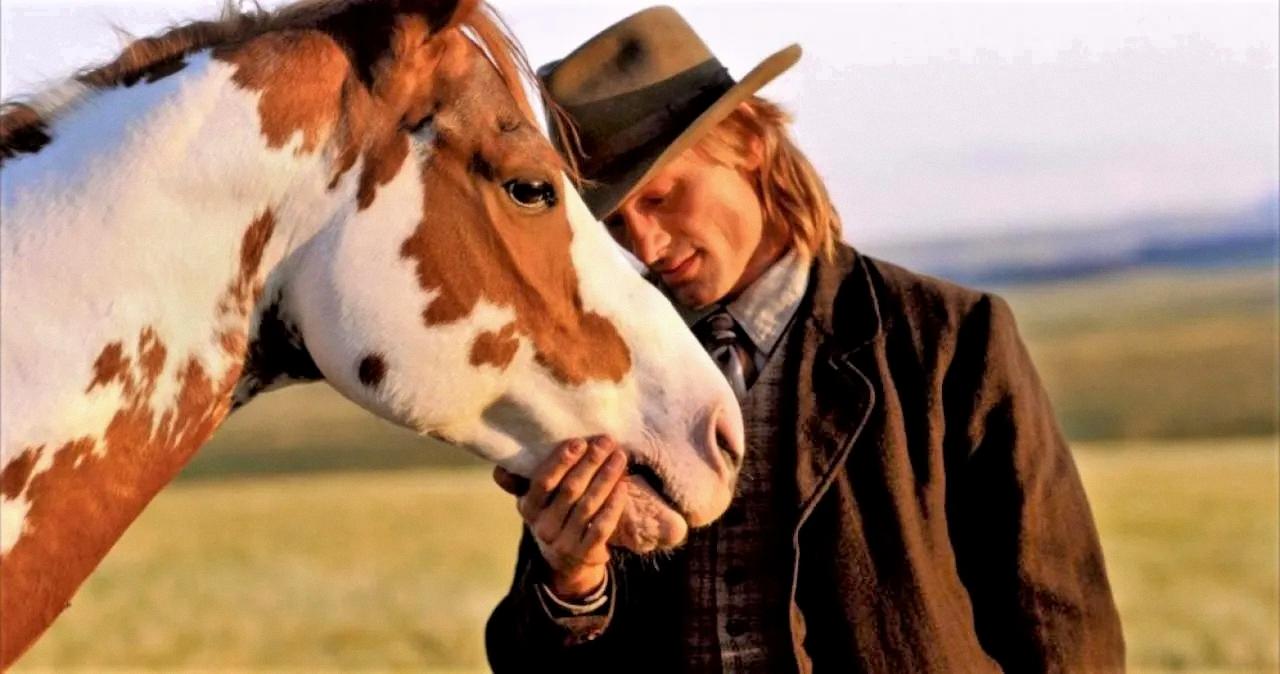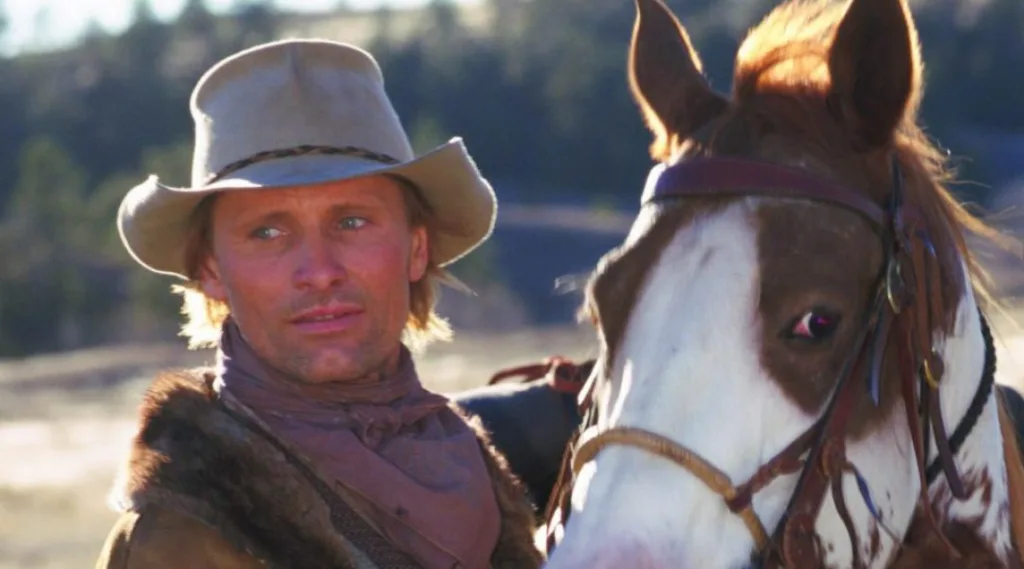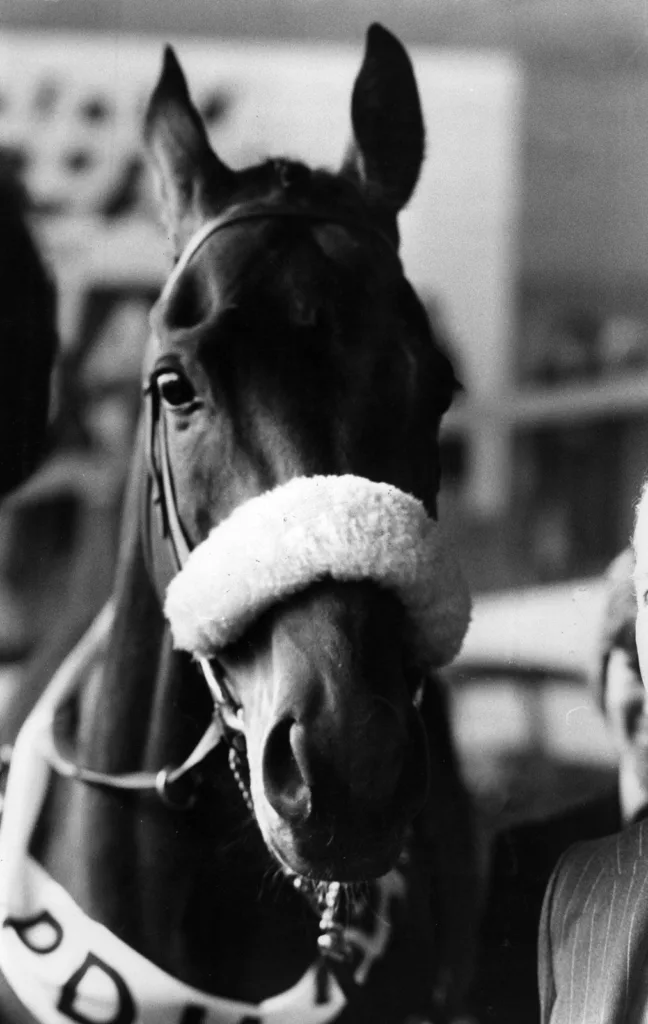When we watch movies based on true stories, we often wonder how much of it is actually true. One such movie is Hidalgo, which claims to be based on the true story of Frank Hopkins, a long-distance horse-racer who participated in a 3,000-mile horse race across the Arabian Peninsula called “the Ocean of Fire.” But how much of it is true, and how much of it is Hollywood fiction? Let’s explore the reality behind the movie.
Frank Hopkins, born on August 11, 1865 (though there are some claims that it is unsubstantiated), was a self-proclaimed professional horseman. He claimed to have won 400 races and was recognized by his contemporaries as supporting the preservation of the mustang. He also performed with the Ringling Brothers Circus at one point in his life.
The Ocean of Fire was a 3,000-mile horse race across the Arabian Peninsula. According to the Longriders Guild, the Saudi Arabian Government officially announced that the Ocean of Fire race has never actually happened. Arab historian Dr. Awad al-Badi stated that such a lengthy race woud have been impossible.
Hidalgo was a real horse owned by Frank Hopkins. He was a mustang, which is a breed of horse that is native to the United States. In the movie, Hidalgo is depicted as a paint horse, but in reality, he was a bay.
The horse in the movie did not die during the race. However, the real Hidalgo died of old age.
The movie takes significant liberties with the story of Frank Hopkins and the Ocean of Fire race. For example, Frank Hopkins was not half Native American, as depicted in the movie, and there is no evidence that he ever participated in any such race. The movie also portrays the Arab characters in a negative light, which has been criticized by many.
While Hidalgo may be an entertaining movie, it takes significant liberties with the true story of Frank Hopkins and the Ocean of Fire race. It is important to remember that movies based on true stories are not always accurate and should be taken with a grain of salt.
Is the Movie ‘Hidalgo’ Based on a Real Story?
Hidalgo is a 2004 film that is claimed to be based on a true story. The movie centers on the story of Frank Hopkins, a legendary long-distance horse-racer, who is invited to participate in a 3,000-mile race called “the Ocean of Fire” across the Arabian Peninsula.
However, the authenticity of the movie’s story has been a matter of debate. Some critics argue that the movie takes significant liberties with the actual events and that there is little evidence to support the claim that the events depicted in the film actually happened.
The movie’s claims are based on the autobiography of Frank Hopkins, titled “Hidalgo: The True Story of a Horse and His Man,” and there is no doubt that Hopkins was a real person. However, many historians and experts have questioned the authenticity of Hopkins’ claims about his racing career, including his participation in the Ocean of Fire race.
Despite the controversy surrounding the film’s authenticity, it is stil an entertaining and enjoyable movie for horse and adventure enthusiasts. The movie’s stunning visuals and exciting action sequences make it an excellent movie to watch with family and friends.
While Hidalgo is based on a real person and claims to be based on a true story, the authenticity of the events depicted in the movie is debatable. However, the movie still offers an entertaining and visually stunning adventure for viewers to enjoy.

Source: centerofthewest.org
Was Frank Hopkins a Historical Figure?
Frank Hopkins was a real person who lived from August 11, 1865, to November 5, 1951. He was a self-proclaimed professional horseman who gained recognition for his long-distance riding abilities and claimed to have won 400 races. He was also known for his support of the preservation of the mustang, a wild horse breed found in North America.
Hopkins’ career as a horseman included performing with the Ringling Brothers Circus at one point. He gained fame for his long-distance riding abilities, which he demonstrated in various races and competitions. While some of his claims about his victories and accomplishments have been disputed, there is evidence to suggest that he was a skilled rider and horseman.
In addition to his riding abilities, Hopkins was also known for his advocacy for the preservation of the mustang. These wild horses were often hunted and killed for their meat or to make room for livestock grazing, and Hopkins was one of the early proponents of protecting them. He believed that the mustang was an important part of American history and culture and should be protected for future generations.
Frank Hopkins was a real person who lived in the late 19th and early 20th centuries. He was a skilled horseman and advocate for the preservation of the mustang, and while some of his claims about his accomplishments have been disputed, he remains an important figure in the history of American horsemanship.
Exploring the Reality of the Ocean of Fire Race
The Ocean of Fire is a race that has been depicted in the 2004 movie, Hidalgo. The race involves a 3,000-mile journey across the Arabian desert, and it is said to be based on a true story. However, there has been much debate regading the authenticity of the race.
According to the Longriders Guild, an organization that promotes the welfare of horses, the Saudi Arabian Government has officially announced that the Ocean of Fire race has never actually happened. This statement suggests that the race depicted in the movie is a work of fiction.
Moreover, Arab historian Dr. Awad al-Badi has stated that such a lengthy race would have been impossible. He explains that horses cannot sustain a gallop for long periods, and the extreme heat and lack of water in the desert would have made it even more challenging for the horses to complete such a race.
While the Ocean of Fire race has been romanticized in the movie Hidalgo, it appears that the race is not based on a true story. The Saudi Arabian Government has denied the existence of the race, and experts have suggested that completing such a lengthy race would have been impossible for horses.
The Fate of Hidalgo the Horse
Hidalgo was a horse that gained popularity due to its association with Frank Hopkins, who was a renowned long-distance rider. The horse was featured in the movie Hidalgo, in which Viggo Mortensen played the role of Frank Hopkins and rode the horse. However, the fate of the horse has been a matter of curiosity to many.
The horse Hidalgo died of old age. The exact age of the horse at the time of death is not known, but it was retired afer the filming of the movie Hidalgo was completed. The cause of death was not disclosed, but it is believed that the horse died of natural causes.
Hidalgo was a purebred Arabian horse, which is known for its endurance and stamina. The horse was famous for its long-distance riding abilities, which made it a perfect fit for the role of Frank Hopkins’ horse in the movie Hidalgo. The horse’s performance in the movie was outstanding, which added to its popularity.
The horse Hidalgo was a remarkable animal that gained fame due to its association with the renowned long-distance rider Frank Hopkins. The horse died of old age, and its exact age at the time of death is not known. It was retired after the filming of the movie Hidalgo was completed.
Accuracy of the Historical Representation in the Film ‘Hidalgo’
Hidalgo is a movie that claims to be based on a true story, but it is not entirely historically accurate. Frank T. Hopkins, the main character portrayed by Viggo Mortensen, was a real person who claimed to have participated in the Ocean of Fire race in 1890, but there is limited evidence to support his claims.
Firstly, the Ocean of Fire race did not exist in 1890. The race depicted in the movie was created for the film and has no basis in historical fact. Additionally, there is no evidence that Hopkins ever participated in any such race.
Secondly, Hopkins claimed to have worked as a dispatch rider for the U.S. Army during the Indian Wars, but there is no record of his service. There are also discrepancies in his accounts of his travels and experiences, which have led some historians to doubt the veracity of his claims.
Moreover, some critics have pointed out that Hidalgo perpetuates certain stereotypes and misconceptions aout Arabian culture and the Middle East. For example, the film portrays the Arab characters as savage and bloodthirsty, and the race is depicted as a battle between East and West.
While Hidalgo is an entertaining movie, it should not be taken as a reliable source of historical information. The film’s portrayal of Frank T. Hopkins and the Ocean of Fire race is largely fictional and should be viewed as such.

Source: horseyhooves.com
Exploring the Reality of the 3000 Mile Horse Race
There relly was a 3,000-mile horse race that took place in 1890. The race was an endurance race that covered the Arabian peninsula, Syria, and much of Iraq. The race was won by Mr. Hopkins and Hidalgo, who completed the race in 68 days. The race was a test of stamina and endurance for both the horses and the riders, and it required a great deal of skill and training to complete. The race was an important event in the history of horse racing, and it helped to establish the Arabian horse as a breed that was capable of great endurance and strength.
Johns Hopkins: A Good Person?
Johns Hopkins, a member of the Society of Friends, was widely recognized for his honesty and generosity. He was known to be a man of integrity, and his philanthropic endeavors have left a lasting impact on society. Hopkins’ transformation from a grocer’s helper to a millionaire banker is a testament to his hard work and dedication.
Hopkins’ philanthropic efforts were unparalleled in Victorian Baltimore. He was a champion of education, medicine, and public health, and his contributions to these fields have had a profound impact on society. His endowment of the Johns Hopkins University and Hospital enabled these institutions to become world-class centers of research and innovation.
Despite his many successes, Hopkins was not without his faults. He was known to be stubborn and hard with a bargain, but these traits did not detract from his overall legacy. His commitment to improving the lives of others, and his unwavering dedication to his philanthropic causes, make him a truly remarkable individual.
Johns Hopkins was a good person. His honesty, generosity, and commitment to philanthropy have left an indelible mark on society. While he was not without his faults, his positive contributions far outweigh any negatives. Hopkins’ legacy continues to inspire people around the world to this day.
Where Is Anthony Hopkins Currently Located?
Sir Anthony Hopkins, the renowned Welsh actor, is currently residing in Malibu, a beach city situated in western Los Angeles County, California. Born in Port Talbot, Wales, Hopkins gained worldwide fame for his tremendous acting skills, particularly for his iconic portrayal of the cannibalistic serial killer, Dr. Hannibal Lecter, in the critically acclaimed movie, The Silence of the Lambs.
Hopkins’ decision to settle in Malibu seems to be a personal preference, perhaps owing to the city’s beautiful and serene coastal location, its favorable climate, and its proximity to the bustling city of Los Angeles. Malibu is known for its stunning beaches, exclusive neighborhoods, and upmarket lifestyle, making it a popular choice for celebrities and affluent individuals.
Despite residing in Malibu, Hopkins continues to be active in the entertainment industry, starring in various movies and TV shows. He has won several awards and accolades throughout his career, including the Academy Award for Best Actor, BAFTA Awards, Primetime Emmy Awards, and Golden Globe Awards, among others.
To summarize, Anthony Hopkins, the legendary Welsh actor, currently resides in Malibu, a beach city located in western Los Angeles County, California, which is known for its stunning coastline and upscale lifestyle. Despite living in Malibu, Hopkins remains active in the entertainment industry, showcasing his remarkable acting skills in various movies and TV shows.
The Breed of Horse Featured in the Movie ‘Hidalgo’
Hidalgo, the equine star of the 2004 Disney movie, was portrayed as a Mustang, a breed of horse that is native to North America. Mustangs, also referred to as American feral horses or wild horses, are descended from domesticated horses brought to the Americas by Spanish explorers in the 16th century. They are known for thir hardiness, agility and adaptability to various terrains and environments. Mustangs come in a variety of colors, including bay, black, chestnut, and gray, and typically stand between 13 and 15 hands high. While they are often associated with the American West, Mustangs can be found throughout the United States, including in the Great Plains, the Southwest, and the Eastern Seaboard.

The Reality of Dream Alliance: A Race Horse Story
Dream Alliance was indeed a real racehorse. He was born on March 23, 2001, and was owned by the Alliance Partnership. Dream Alliance was trained by Philip Hobbs, who is a well-known and respected trainer in the horse racing community. Dream Alliance had a successful career as a racehorse, winning several races and earning a reputation as a talented and competitive runner. He was particularly successful in National Hunt races, which are races that involve jumping over hurdles or fences. Dream Alliance retired from racing in 2012, but he remains a beloved and celebrated figure in the world of horse racing.
The Reality of the Black Stallion
The Black Stallion is a fictional character created by Walter Farley in his children’s novel of the same name. The story folows the adventures of a young boy named Alec and a wild Arabian stallion that they both survive a shipwreck together. The novel was published in 1941 and has since become a beloved classic in children’s literature. However, it is important to note that The Black Stallion is not a real horse and the events portrayed in the book and subsequent movie adaptations are fictional. The character has captured the hearts of readers and viewers alike with his strength, beauty, and spirit, but he is not a real-life animal.
Did Viggo Mortensen Perform His Own Horse Riding in ‘Hidalgo’?
In the 2004 Western adventure film Hidalgo, actor Viggo Mortensen played the lead role of Frank T. Hopkins, a cowboy who enters a long-distance horse race across the Arabian desert. During the course of the film, Mortensen is seen performing several stunts and riding horses in various scenes.
In fact, it has been reported that Mortensen did many of his own stunts and horse riding in the movie. This includes riding bareback, standing on a galloping horse, and jumping from horse to horse.
Mortensen’s extensive experience with horses and his dedication to his craft likely played a significant role in his ability to perform thee feats on screen. He has been a horse owner and rider for many years and has even owned a ranch in Idaho.
It can be said that Viggo Mortensen did indeed do his own riding in Hidalgo, demonstrating his commitment to delivering an authentic and convincing performance in the film.
Is Red Rum the Legendary Horse Still Alive?
Red Rum, the famous racehorse, is no longer alive. He was retired from racing in 1978 and passed away in 1995. Red Rum was a legendary horse who won the Grand National three times, in 1973, 1974, and 1977. His owner, Noel Le Mare, earned a total of $193,800 from these victories.
Despite his passing, Red Rum’s legacy lives on in the world of horse racing. He was widely regarded as one of the greatest racehorses of all time and was known for his incredible stamina and determination. Red Rum’s success has inspired many other horses and continues to be celebrated by fans of the sport today.
It is worth noting that while Red Rum may no longer be with us, his story continues to be told thrugh books, documentaries, and other media. His achievements have become a part of racing history and will be remembered for many years to come.

What Became of John Wayne’s Horses?
John Wayne was an avid horse lover and owned several horses duing his lifetime. After his death in 1979, his horses were dispersed among various owners. One of his famous horses, Dollor, was kept by his friend and stuntman, Chuck Roberson, for a year after Wayne’s death. Dollor was then used in two television productions, “Hart to Hart” and “Dynasty,” where he was ridden by Robert Wagner and John Forsythe, respectively.
After his stint in television, Dollor was sold to the International Rodeo Association, who later sold him to Terry Busch from Iowa. It is not clear what happened to the other horses that Wayne owned, but it is believed that they were also sold or given away to different owners.
John Wayne’s love for horses was evident not just in his personal life, but also in his movies. He was known for his cowboy roles and often performed his own stunts on horseback. In fact, he was so passionate about horses that he even started a charity called the John Wayne Cancer Foundation, which raises funds for cancer research and education through horseback riding events.
John Wayne’s horses were dispersed among various owners after his death, with Dollor being one of the most famous ones. Wayne’s love for horses was evident not just in his personal life, but also in his movies and his charity work.
The Euthanization of Galileo Horse
Galileo, the renowned Thoroughbred racehorse, was put down on 10 July 2021 after suffering a debilitating injury to his near foreleg. The injury was so severe that it failed to heal even after a surgery earlier that year. Despite the best efforts of his veterinary team, it became clear that Galileo’s quality of life could no longer be maintained, and the difficult decision was made to euthanize him.
Galileo was a highly successful racehorse, winning six Group One races during his career, including the Derby, the Irish Derby, and the King George VI and Queen Elizabeth Stakes. He was also a prolific sire, producing many top-class offspring, including Frankel, Australia, and Highland Reel. Galileo’s success as a sire was not limited to his own progeny, however, as he also became a leading broodmare sire, with his daughters producing many top-class racehorses.
The loss of Galileo is a significant one for the world of horse racing, as he was widely regarded as one of the most influential sires of his generation. His legacy will no doubt continue through his many successful offspring, but his passing is a reminder of the fragility of life and the importance of cherishing those we hold dear.
Conclusion
While Hidalgo is marketed as a true story based on the life of Frank Hopkins, tere are many discrepancies and inconsistencies with the actual events. The Ocean of Fire race, which serves as the centerpiece of the movie, has been officially denied by the Saudi Arabian government and deemed impossible by historians. Additionally, while Frank Hopkins was a skilled long-distance rider and horseman, his claims of winning 400 races are unsubstantiated.
Despite these inaccuracies, Hidalgo still serves as an entertaining and thrilling adventure movie. Viggo Mortensen’s portrayal of Frank Hopkins is captivating and the stunning visuals of the Arabian desert are breathtaking. However, it is important to separate the Hollywood fiction from the true historical facts.
Hidalgo should be enjoyed as a work of fiction rather than a factual representation of Frank Hopkins’ life and the Ocean of Fire race.
